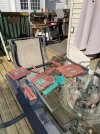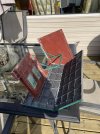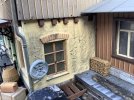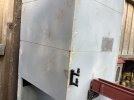Ah, so all styrene construction. I have a few Piko and Pola buildings on my line. The lowest temperature we get in my neck of the wood, and very rare, is -15C, maximum +30C. Most important with these structures is to ensure a good clean joint between panels and parts. These products use an all over colour wash to give them a "uweathered" appearance or add depth and contrast to a textured panel, like a wood grain.The problem is this "colour wash" finish acts as a barrier to any adhesive, solvent or otherwise. It's the same problem with chrome plated plastic kit parts, remember those falling apart ?
You must first carefully abrade any joining surfaces, to be glued together, to clear this "colour wash" finish fully where those surfaces contact. Then use a regular solvent adhesive made for use with styrene or ABS materials. In the UK I use a product from EMA but a regular liquid styrene glue will do. Following this process means you have "clean" styrene that the solvent can act on effectivly to create a strong bond/weld. For a long term reliable joint fill the inside (invisible) areas of joints with a bead of two pack filler or silicon sealant to reinforce.
Other advice offered about siting buildings remains. Another adhesive that could be used to effect a strong bond between sub assemblies, like roofs and main building structures in place of the sealant/filler option - the original type Gorilla Glue. It's a polyurethane product that has foaming properties that allows it to get into every crevice (use with care as it can get messy). I use it on resin buildings or where a building is placed in full sun locations. It's not a solvent type adhesive so won't "weld" parts together. However, it sticks like the proverbial and it has a little "give" to cater for where individual parts bonded may not expannd/contract at the same rate. Max







